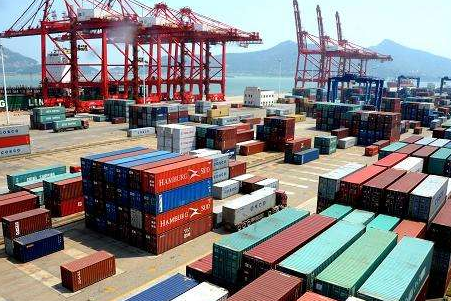by Xinhua writer Tan Jingjing
LOS ANGELES, March 5 (Xinhua) -- The Port of Long Beach, the second busiest port in the United States, expects positive progress from the U.S.-China trade talks, and hopes to further enhance trade links with China, said port executive director Mario Cordero.
In an interview with Xinhua on Tuesday, Cordero hailed the importance of trade with China, saying the Port of Long Beach will not exist without trans-Pacific trade and links with China.
"About 70 percent of our import containers are directly from China, and 40 percent of our exports leave here for China," he said.
Founded in 1911, the 3,200-acre Port of Long Beach is a premier gateway for trade between the United States and Asia. It supports more than 2.6 million jobs nationally and generates billions of dollars in economic activity each year.
East Asian trade accounts for more than 90 percent of the shipments through the port, with top trading partners by tonnage include China, South Korea, Japan and Vietnam.
Cordero said the latest round of U.S.-China trade talks was encouraging. The progress of the talks was good for trade and business ties between the two sides.
Negotiators of the two countries achieved marked advancement on specific issues in their Feb. 21-24 talks in Washington, the seventh round since February last year, covering non-tariff barriers, agriculture and service industry, technology transfer, protection of intellectual property rights, and exchange rates, according to the Chinese delegation.
U.S. President Donald Trump later tweeted that he "will be delaying" tariff hikes on Chinese imports previously scheduled for March 1, citing "very productive" trade talks between the two countries.
Cordero said that he is optimistic about the prospects of the talks, and he appreciates China's commitment for further reform and opening up.
For the first time in its 108-year history, the Port of Long Beach handled over 8 million twenty-foot equivalent units in 2018, as container cargo totals jumped more than 7 percent from 2017, according to Cordero.
The port has worked diligently to reduce pollution from port-related sources such as shipping lines, trucks, cargo equipment, harbor crafts and rail through its Clean Air Action Plan, which went into effect in 2006.
It has adopted environmental protection measures, including low-sulfur fuel incentive program and vessel speed reduction program, to cut greenhouse gas emission, which has been decreased by 18 percent since 2005, according to the port.




 A single purchase
A single purchase








